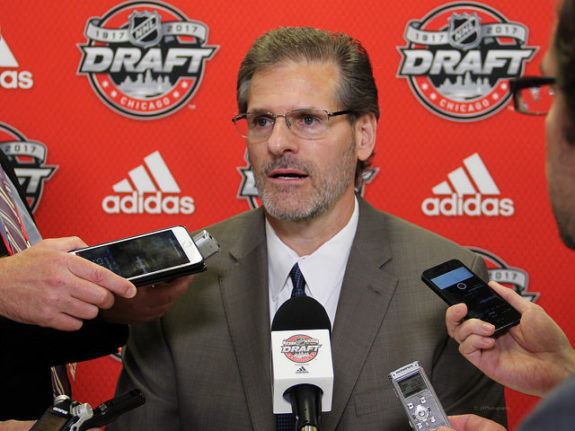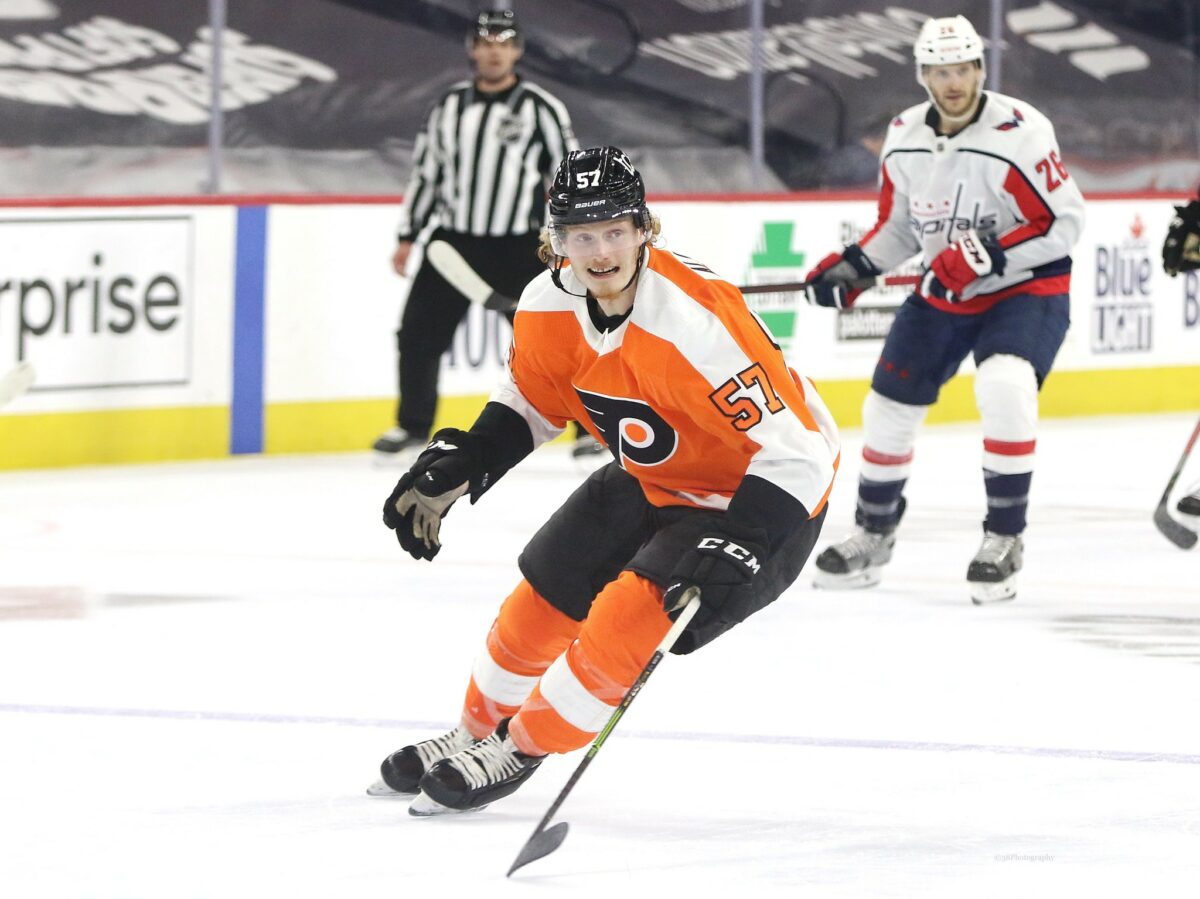From the mid-2010s through the rest of the decade, the Philadelphia Flyers had a short rebuild filled with flaws. Now that they are in another rebuild, it leaves the team in a place where they can learn from their past mistakes. What were those, and how can the Flyers go about their business differently this time around?
Flyers’ Indecisiveness
The Flyers never made it truly apparent as to what they really were. The official start of the rebuild began in the 2014-15 season after they finished with the seventh-worst record in the NHL, but still with a respectable 33-31-18 campaign. The issue was that their rebuild was hardly even that, but they did sell defenders Braydon Coburn and Kimmo Timonen at the trade deadline, acquiring some draft picks in return.
At the same time, the Flyers still had most of their main roster intact without properly building around them. Forwards Claude Giroux, Jakub Voracek, Wayne Simmonds, and Brayden Schenn led the way, but around them, it was particularly bleak. The Flyers were in no man’s land, and general manager (GM) Ron Hextall never went all-in to make his team’s rebuild a true one. Neither a bottom feeder nor contender, the Flyers alternated first-round exits with playoff misses season after season while he was in the front office.

The groundbreaking trades for the Flyers stopped for a bit. During Hextall’s time as GM, there weren’t too many that moved the needle one way or the other. Getting some good assets for both Coburn and Timonen was nice, but their future in Philadelphia was limited anyway. At that point in their careers, they were simply fine top-four defenders. The real meat of the roster was kept, and that held the Flyers back in a way.
The Flyers made the playoffs as the last seed in 2015-16, but they never had the talent nor depth required to threaten to do much of anything. They lost in six games to the Washington Capitals, relying on goaltender Michal Neuvirth to put up a godlike .981 save percentage (SV%) and 0.67 goals-against average (GAA) in the series. Looking back, the Flyers’ inability to get any offense despite all their star players being in their mid to late 20s should have been a bit telling. Maybe it was arrogance, but the Flyers ran it back without a care in the world, and a disappointing season followed.
The Flyers narrowly missed the playoffs in 2016-17, and they made a single big trade that — once again — didn’t move the Orange and Black in any direction in particular. They sent forward Brayden Schenn to the St. Louis Blues for draft picks, but that didn’t change the complexion of the Flyers’ roster. The Flyers went back to their old ways in 2015-16 where they barely made the postseason and lost in the first round in six games.
An aging team, the Flyers made a notable free-agent signing in James van Riemsdyk that clearly wouldn’t turn them from a borderline playoff team into a true contender. That’s what ended up happening, as the Flyers missed the playoffs in 2018-19, costing Hextall his job before the conclusion of the season. The Flyers flirted with contention in 2019-20 when they made it to the second round, but the eventual failures of that era left us with the new rebuild the Flyers are in now.
Several Draft Miscues
On top of a lack of moves, the Flyers were subpar at drafting during the Flyers’ last rebuild. If a team can’t draft well during a rebuild, it is doomed from the very start; nothing could have changed what eventually happened to the Flyers.
Starting with the 2015 NHL Draft, it was a strong class that the Flyers simply missed out on early. They got the seventh-overall pick in that draft, using it on defenseman Ivan Provorov. He flirted with some good seasons but was ultimately never a true No. 1 defenseman. When you draft a defender that high to eventually lead the way, their failure means a letdown of a rebuild. He never quite became an elite defenseman in Philadelphia, and that was no good for the Flyers.
The Flyers picked in the middle of the first round in the 2016 NHL Draft, and that wasn’t much luck for them, either. They selected forward German Rubtsov, a player who played just four games for the Flyers and none when Hextall was still employed. To their credit, they took goaltender Carter Hart in the second round of that draft, but they also used picks on forwards Pascal Laberge and Wade Allison. The former is no longer with the organization, while the latter is in the American Hockey League (AHL) as a 26-year-old.

If the other drafts weren’t good enough for the Flyers, the 2017 NHL Draft is what truly sealed their fate. Even though they finished just outside of a playoff spot, they had the fortune to move up to the second-overall pick in that draft. With four future All-Star players in the first five selections of the draft, the Flyers took the only one who has not only never been an All-Star, but one who hasn’t played in an NHL game since March 24, 2022: Nolan Patrick. He is no longer with the Flyers’ organization, traded from the team following a disappointing 2020-21 season. Much of the same applied to the rest of the Flyers’ draft in 2017, making it a complete disaster from start to finish.
Related: Revisiting the Philadelphia Flyers’ 2017-18 Prospect Pool
In Hextall’s last draft with the Flyers, they took a chance on forward Jay O’Brien in the first round. This was seen as a big reach at the time, and hindsight doesn’t look upon that pick fondly, either. He never signed his entry-level contract with the Flyers, and his selection was the epitome of Flyer draft picks from that time period.
The Flyers didn’t hit on a true late-round gem, either. Finding a star after the first and second rounds of the draft is highly unlikely, so hitting on first-round picks is essentially the only way for a rebuild to work. The Flyers didn’t do either particularly well, so their drafting was a reason for their failures.
How the Flyers of Today Can Learn
Whatever today’s Flyers think they are is perfectly acceptable as long as they can commit to whatever that is. They are off to a great start that doesn’t seem to be slowing down in 2023-24, so if they want to build off that, they should. If they want to get all they can out of their veterans and sell them for draft picks and young players, that might also be a good idea.
Drafting is pretty hit-or-miss, but the Flyers can certainly go about things better. They had picks that were seen as illogical back then, and not even hindsight is treating their decisions with kindness. As long as the Flyers make what they’re doing apparent, they shouldn’t have the same issues.
Some might not even consider the Flyers’ process in the latter half of the 2010s a rebuild at all, which further proves that it was a failure. They did quite a few things poorly, and it was a waste of a potentially great turnaround for the Orange and Black.
